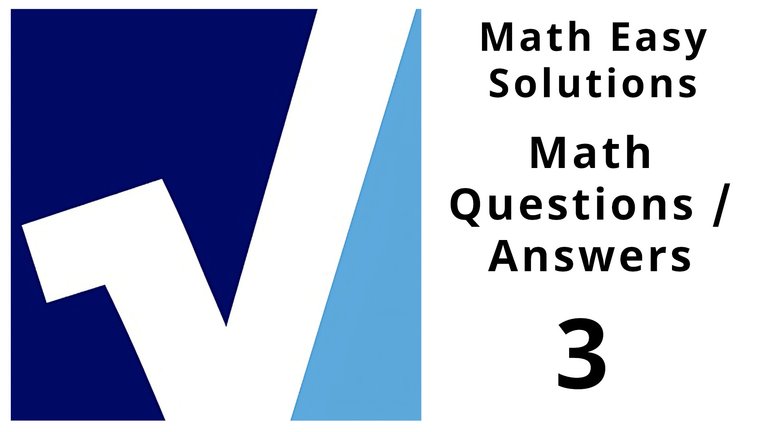▶️ Watch on 3Speak - playlist
If you have math related questions, I may have answers.
January 29, 2025 SATURDAY at 10:00 AM PST

Become a MES Super Fan! https://www.youtube.com/channel/UCUUBq1GPBvvGNz7dpgO14Ow/join
DONATE! ʕ •ᴥ•ʔ https://mes.fm/donate
SUBSCRIBE via EMAIL: https://mes.fm/subscribe
MES Links: https://mes.fm/links
MES Truth: https://mes.fm/truth
Official Website: https://MES.fm
Hive: https://peakd.com/@mes
Email me: [email protected]
Free Calculators: https://mes.fm/calculators
BMI Calculator: https://bmicalculator.mes.fm
Grade Calculator: https://gradecalculator.mes.fm
Mortgage Calculator: https://mortgagecalculator.mes.fm
Percentage Calculator: https://percentagecalculator.mes.fm
Free Online Tools: https://mes.fm/tools
iPhone and Android Apps: https://mes.fm/mobile-apps
This stream is created with #PRISMLiveStudio
▶️ 3Speak
!summarize https://www.youtube.com/live/eNoHKaftMVI
Part 1/8:
Understanding AI and Its Applications
AI, or Artificial Intelligence, has become a significant topic of discussion and development across various fields, including mathematics, economics, and ethics. Recently, a live streaming session focused on understanding how AI works and addressing particular mathematical inquiries. The session featured conversation about current AI projects and highlighted instances of misinformation in the realm of public safety announcements.
The Objective of the Live Stream
Part 2/8:
The live streamer emphasized that the primary motivation for these sessions was to answer math questions while simultaneously researching and discussing AI. By engaging live with an audience, it allows participants to ask questions and gain insights uniquely tailored to their inquiries. This collaborative approach fosters an educational atmosphere while tackling the complexities of AI and mathematics.
AI in Public Safety Announcements
Part 3/8:
A notable part of the discussion revolved around the creation of a public safety announcement using AI-generated content about a controversial figure, Jeremy Reese, known online as ‘Alien Scientist.’ The announcement flagged accusations against him, including violence and the spread of misinformation relating to significant events like 9/11. The session showcased how AI can automate the generation of serious content, but it also raised questions about the ethical implications of such technology in disseminating information.
Exploring How AI Works
Part 4/8:
As part of the exploration of AI, there was a detailed breakdown of how neural networks, a fundamental component of AI, function. The network consists of layers, where each neuron within those layers processes input data, in this case, images of handwritten digits.
The Neural Network Structure
The streamer described a typical neural network that processes data through multiple layers composed of input neurons, hidden neurons, and output neurons. Neural networks rely on weighted connections between these neurons to recognize patterns. The network learns to minimize errors during training by adjusting these weights based on feedback received from the cost function.
In simple terms:
Part 5/8:
Hidden Layers: Extract features and patterns from the data.
Output Layer: Produces the results based on processed inputs.
Cost Function and Gradient Descent
A crucial concept presented during the live stream was the cost function, which measures the model’s accuracy. The function helps communicate how well the network is performing against the expected outcome. If the output is far from the target, the function calculates the error and guides the adjustments needed.
Gradient descent was explained as the method through which the model iteratively corrects itself based on the slope produced by the cost function—a technique aimed at minimizing the error.
The Importance of Training Data
Part 6/8:
The training data serves as the foundation for effective AI models. The streamer emphasized the need for large datasets to teach AI how to distinguish between various inputs accurately. Each training example adjusts the weights and biases within the neural network to fine-tune its performance over time.
Integration of extensive and diverse data allows AI not just to react but to develop a nuanced understanding of the characteristics of the data it processes.
Future Implications of AI
Part 7/8:
As the live session came to a close, the implications of AI on society were pondered. The discussion highlighted potential ethical dilemmas, particularly in how AI-generated information could influence public perception and reality. This cautionary approach to AI use argued for a need for transparency, especially in developing systems that could impact safety and misinformation.
AI has the potential to dramatically reshape how we interact with information and navigate the complexities of modern life—but it also comes with responsibility that demands vigilance and ethical considerations.
Conclusion
Part 8/8:
The exploration of AI during this live stream not only underscored the underlying mathematical principles but also provided essential insights into ethical implications surrounding misinformation dissemination. AI's growth presents invaluable opportunities for innovation while challenging societal norms about trust, accuracy, and responsibility in the information age. Engaging in discussions like these is vital to shaping a future where AI works for the benefit of all.